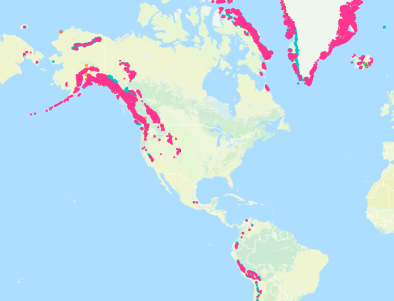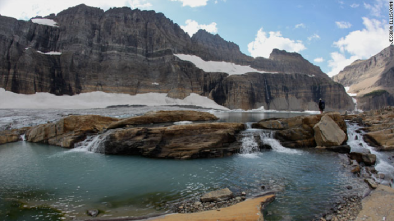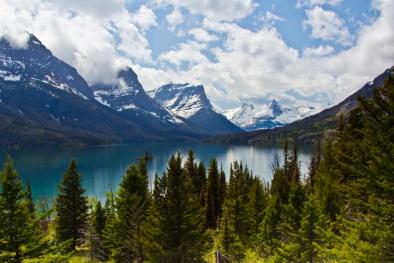Science Source
Climate-induced glacier and snow loss imperils alpine stream insects
- States that rapid loss of glaciers and snowpack in mountainous regions worldwide are predicted to negatively impact the habitats of many range-restricted species, particularly endemic, mountaintop species dependent on the unique thermal and hydrologic conditions found only in glacier-fed and snowmelt-driven alpine streams
- States that, although progress has been made, existing understanding of the status, distribution, and ecology of alpine aquatic species, particularly in North America, is lacking, thereby hindering conservation and management programs
- States that two aquatic insects – the meltwater stonefly Lednia tumana and the glacier stonefly Zapada glacier – were recently proposed for listing under the U.S. Endangered Species Act due to climate-change-induced habitat loss
- Uses a large dataset (272 streams, 482 total sites) with high-resolution climate and habitat information to describe the distribution, status, and key environmental features that limitL. tumana and Z. glacier across the northern Rocky Mountains
- Detects Lednia tumana in 113 streams (175 sites) within Glacier National Park (GNP) and surrounding areas
- Finds the probability of L. tumana occurrence increased with cold stream temperatures and close proximity to glaciers and permanent snowfields
- Similarly finds that the densities of L. tumana declined with increasing distance from stream source
- Detects Zapada glacier in only 10 streams (20 sites), six in GNP and four in mountain ranges up to ~600 km southwest
- Results show that both L. tumana and Z. glacier inhabit an extremely narrow distribution, restricted to short sections of cold, alpine streams often below glaciers predicted to disappear over the next two decades
- Concludes that climate warming-induced glacier and snow loss clearly imperils the persistence of L. tumana and Z. glacier throughout their ranges, highlighting the role of mountaintop aquatic invertebrates as sentinels of climate change in mid-latitude regions
Related Content
Real Time Data

Nov 22, 2016 | National Snow and Ice Data Center
Global Land Ice Measurements from Space (GLIMS)
Headline

Nov 22, 2016 | CNN
Montana's melting glaciers: The poster-child for climate change
Headline

Nov 22, 2016 | Mother Jones
7 More National Parks Threatened by Fire
Science Source
| Climatic Change
Changes in snowmelt runoff timing in Western North America under a 'business as usual' climate change scenario
Iris Stewart, Daniel Cayan, and Michael Dettinger


